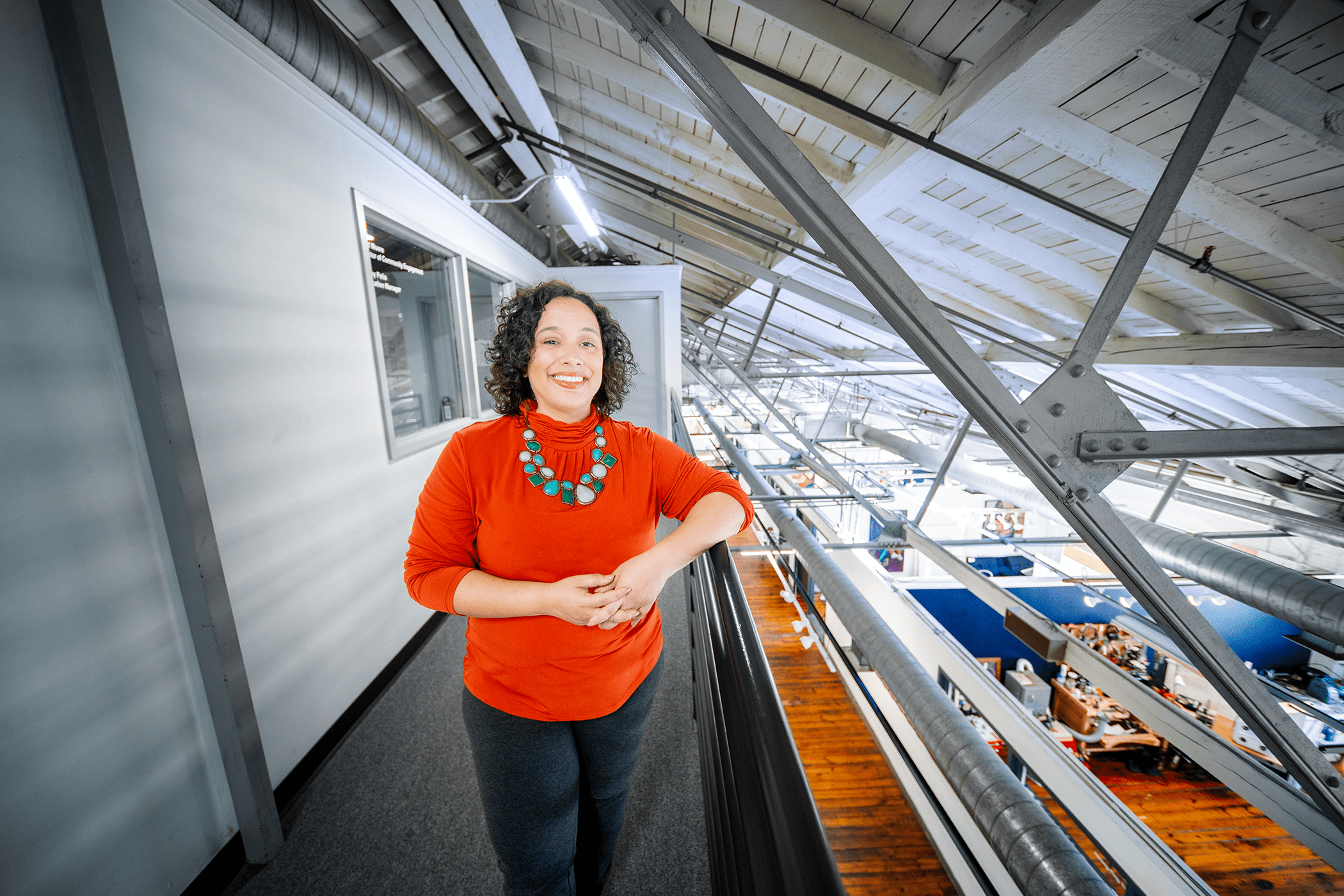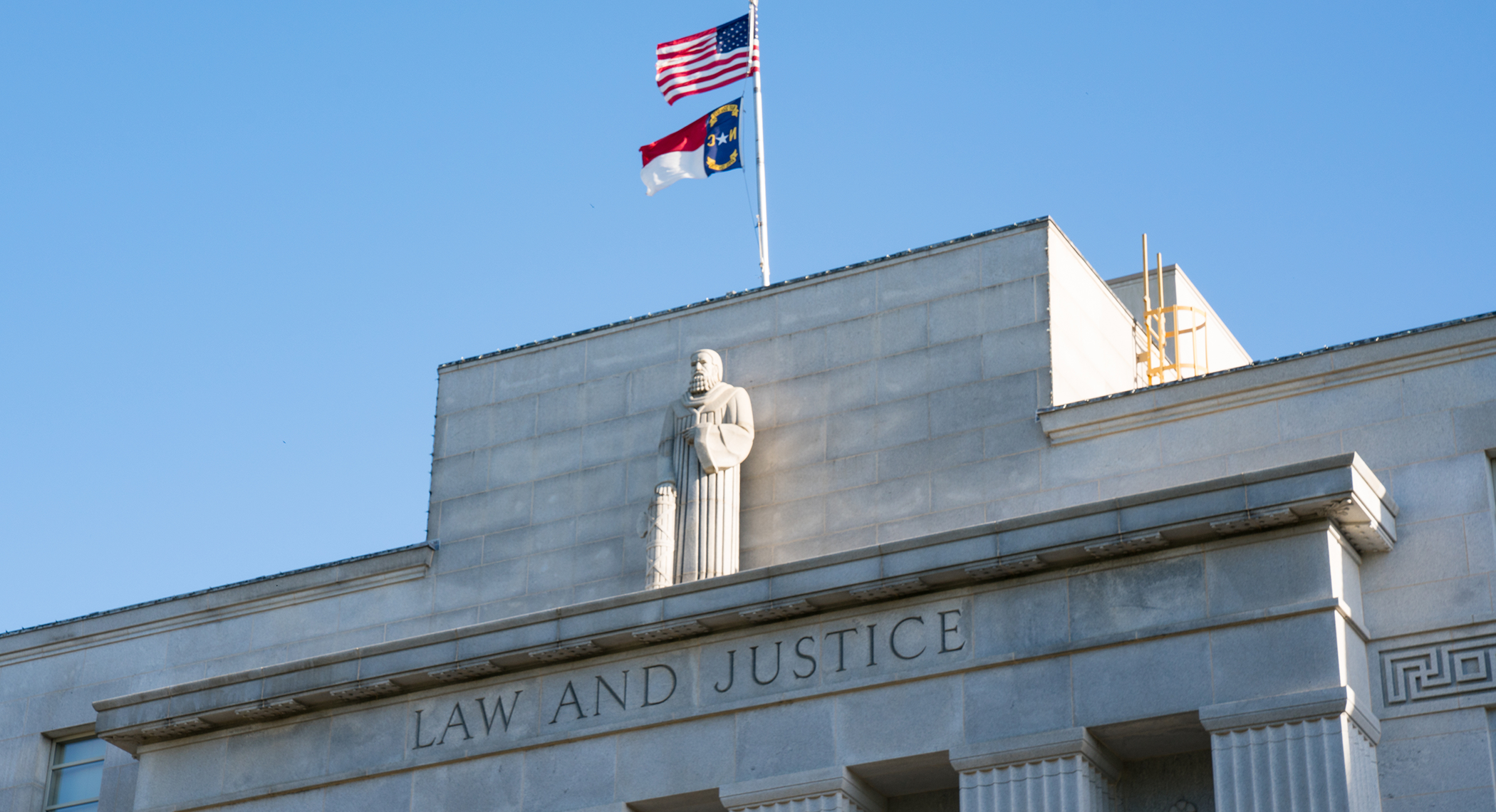Art has the remarkable ability to reflect and shape our unique society. It acts as a powerful medium for cultural expression and social change in the Black community, and creates a connection to our shared journey of struggle, resilience, and vitality. In the heart of Raleigh, North Carolina, ArtSpace has become a landmark for
creativity, showcasing the diverse and vibrant world of Black art. Artspace serves as a unique hub for artists, offering them a space to create, exhibit, and connect with fellow artists and art enthusiasts. What sets this space apart is not only its physical presence as an eclectic community of visual artists under one roof, but also its dedication to nurturing creativity and championing the transformative power of art.
At the helm of this visual art nonprofit is Carly Jones, an accomplished artist and creative CEO of Artspace, whose journey exemplifies a commitment to promoting Black art and fostering a thriving artistic community. As an artist herself, Jones has a deep-rooted passion for showcasing the richness and diversity of Black art. Her journey as CEO of Artspace is a testament to her unwavering commitment to creating an inclusive platform that celebrates and elevates Black artists in North Carolina. Substantial takes a peek into the world of Carly Jones and the thriving artist community at Artspace.
Tell us about Carly Jones.
My name is Carly Jones, and I was born and raised in Raleigh, North Carolina. I am an Arts Executive and CEO of Artspace in downtown Raleigh. I’m also a performing artist myself, and I love what I do. And I love all of the connections that I get to make every day with artists.
Artspace is very unique. It is a visual art nonprofit located in the very heart of Raleigh, and the City Market area. And we have the largest community of visual artists under one roof, creating together here in this space – sculptors, painters, textile artists, you name it. We also have three gallery spaces that are open to the public. Those galleries have art from all over the country and the region, rotated regularly. And then we also have arts education for all ages.
I actually went to camp here as a kid. So that’s how long we’ve been doing arts education. So all of that intersects really beautifully, because children and youth can come and actually learn more about art and the creative process and explore that and meet actual artists that are here living and working in our communities. So it’s a really unique and special place.
Talk to us about the significance of the Artspace and being here.
We love our building. It is a large historic building in a historic area of Raleigh called City Market. It actually was originally the city livery, which is where the horses were kept back in the day. So it was built in 1911. And then it eventually became the Ford Sanders automobile dealership for a while in the 50s. And then later on in the 1980s, it became art space, it was renovated into this, this space that we now know and love.
That’s so awesome. It’s important to know that history because it talks about the foundation of how long you all have been around. You mentioned going to art camp as a kid. When did you know, Or when did you develop a passion for the arts?
The arts were really important to me as an outlet, growing up as a child. I grew up in a biracial household, in the 80s, and 90s. There weren’t a lot of kids like me back in the day. And I found a real creative, safe space on stage singing, and creating and being able to express and really use my own voice at art camp and in classes. So that was really important for me, growing up and becoming the woman that I am today to really build the confidence that I now have, and really know who I am, and learn more about other people and other perspectives.
You know, I think that art is a powerful tool that connects us. I think, oftentimes folks believe that art is just entertainment or fluff, and it can be an escape from the real world. Art can be an escape, it can be beautiful. It can also be a powerful tool to amplify voices. Art can bring people together and also get us through those very important conversations and create empathy so that we can understand one another more. I noticed that at a young age, the power in the arts- that it could not only be something fun and exciting, but also a very powerful tool to bring communities together.
Wow. And now fast forward. You’re now the CEO of the Artspace where you went as a kid. Talk to me about your journey to this point. Did you think it would come to this where you are now?
It’s a full circle moment for sure. There is no blueprint for a career in the Arts. I think that is what is the most exciting and also challenging part of working within the arts. I did not have a goal to be the CEO of Artspace. When I was growing up, I just knew that I wanted art to be a part of my life. I knew that I wanted to make sure that art was a part of other people’s lives. Arts Access was really important to me, and I learned arts administration and arts management, and actually went to school on a music scholarship. And then I ended up also getting a Major in Arts Administration, learning the business behind the Arts. So I’ve really been able to use that on the funder side when I worked at the North Carolina Arts Council, and then also on this nonprofit side as well. And I think that is a very useful tool for any artist to have- to know about grant writing, to know about marketing, to know about management, and these institutions and these nonprofits that are kind of this thread throughout our art sector.
So yes, my journey to becoming the CEO of Artspace has been interesting, I have really seen all perspectives of arts administration and arts management. I have seen art space through the eyes of a young camper here, I’ve seen art space through the eyes of a funder at the North Carolina Arts Council, and I’ve seen Artspace through the eyes of being on staff here, and also just being in this community. So all of those perspectives are a part of the work that I do here.
Talk to me for just a moment about how Artspace is helping young artists further cultivate their talents and providing them with
opportunities to share their work?
Making sure that art is accessible to all people is very important to us. Our mission at Artspace is to inspire positive community impact through art. And we have residencies for emerging artists. We actually have two North Carolina emerging artists and residents here and they have a studio for free for a whole year to get to be a part of our arts community. And then at the end of the residency, we have an exhibition at one of our gallery spaces showcasing their work. We also have a universal access residency, which goes towards artists from the disability community. And we have our newest residency, our HBCU artists and residents, which goes towards an incredible artist that comes from one of our many North Carolina HBCUs. They also are going to be with us for a whole year with an exhibition at the end of the year. Our inaugural artist is Jalen Jackson this year who’s an incredible painter. We also have workshops for young artists about “what does it take to be an artist”, and all of the tools that we need to be able to have a career in the arts. So we want to be a hub not only for people to come and explore art, but also a resource for artists to come together and connect and talk about what’s current in our art sector. And then, of course, we have our arts education.
I mentioned camp earlier; We have camp and classes for young children, but we also have very advanced classes for adults as well. So any level, any age, can come here and learn and explore their creative process. We are very much about making sure that the veil is pulled away from the arts, and it doesn’t have to be mysterious. We want folks to be exposed to the creative process and explore their own creative processes here at Artspace.
So, let’s talk about the executive side of things for just a moment. There may be some young artists that are going to read this feature, and wonder how they get their art commissioned or featured in a gallery. Could you just maybe talk very briefly about the process.
Sure, we have a very equitable process on how we choose our artists for our opportunities. Every year we’ll have an artist call, meaning we’ll publicize on our website, and through newsletters and with our partners that we have artist opportunities. And then artists can apply for residencies, they can apply for exhibition opportunities. And then we have what we call a panel process. So every year we come together, and there are a couple of folks on our staff, our amazing team here at Artspace, and we also bring in artists from the community- different ones every year. We make sure there are people from all perspectives, all cultural backgrounds, on our panels, so that we have a fair and equitable process on how to choose artists or artists opportunities. So any young person that’s out there that really wants to be a part of this scene, or learn more or get opportunities, I welcome them to come to Artspace and check it out. Another great thing to do, even if you’re a little too intimidated to apply just yet, is to just come to Artspace on First Fridays of every month. We have extended hours from 6 to 10, and all the artists are here in their studios. It’s free, it’s open to the public, and folks from all over can come here for live music, check out our exhibitions, and talk to other artists here in the space.
Where do you get your creative inspiration?
I get my inspiration from my community. I love people. I love getting to know people and getting to know what makes them tick. That’s where I get most of my inspiration—real life and real people that are in my life.
Growing up, who was your favorite artist?
My favorite artist was Audra McDonald, because I was very into singing and Broadway. She’s not a visual artist, but that’s probably who I was most obsessed with. She has the most Tonys of anyone.
What’s one project you’re most proud of?
My work in collaboration with the African American Heritage commission. When I was at the North Carolina Arts Council, I worked with my colleagues to preserve the home of Nina Simone, which is in Tryon, North Carolina. It was a part of a much larger effort to do that. But I was able to bring in artists as a part of that work.
I love her quote,”An artist’s duty is to reflect the times.” That is what I go by, and there’s a lot of pressure for some people. But for me, that means a lot.
Have you ever had a bad project? And if so, would you learn from it?
Yes, I have had bad projects. I have learned that it is important, if I’m going to personally work on a project as an artist, that I really love the work and I love who I’m working with. I think that sometimes as artists, we all have to make a decision. Am I doing this because I know that this is going to stretch me artistically or just because I need the job? And that is a hard struggle to work with every day. So I think as an artist, I have worked on some not so great projects with folks that don’t share the same mission and vision.
If you could tell your younger self, anything, what would it be?
I would tell myself as a young girl, it’s going to be alright. It’s okay that there’s not a blueprint. Lean into your talents. Lean into your dreams. I know that sounds corny, but it’s true. It will all work out. Nothing is permanent, and it might be hard right now. But if you just keep leaning into your talents and leaning into your dreams, then everything eventually will work out. It may not work out the way that you actually sketched it out to be. But it’ll work out in a whole other way that you could only dream about.
Artspace is supported by the North Carolina Arts Council, a division of the Department of Natural and Cultural Resources; the United Arts Council of Raleigh + Wake County; and funded in part by the City of Raleigh based on
recommendations of the Raleigh Arts Commission.
Follow the Artspace on IG @artspacenc






